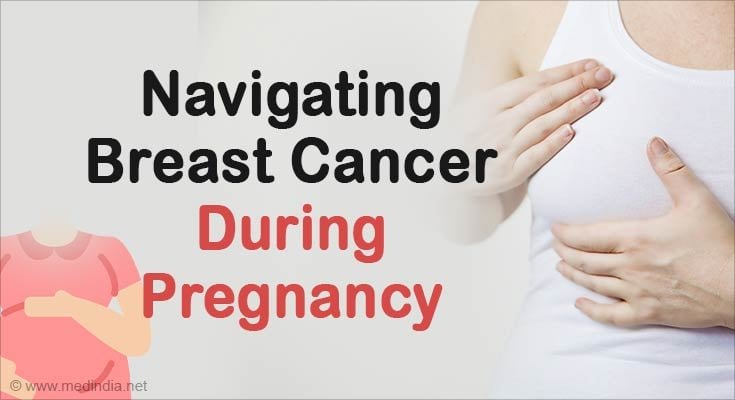Balancing Maternal and Fetal Health

in the breast, nipple changes such as inversion or discharge, skin changes such as redness or dimpling, and chronic pain (
). Detecting these indicators is critical since hormonal changes during pregnancy might be confused with the standard breast cancer warning signs. Consult a doctor if you notice any changes in your breast.
Clinical tests and sonographic imaging may not provide appropriate results since the breast changes dramatically during pregnancy. While these are the initial steps in examination and diagnosis,
can be conducted with low risk to both mother and child; nonetheless, mammography’s function in diagnosis is restricted. In certain cases, an ultrasonography examination can detect breast cancer. Core needle biopsy and chest radiography with sufficient shielding are also considered safe during pregnancy. At the same time, magnetic resonance imaging can detect metastases but is dangerous due to heating and cavitation (
).
When PABC is diagnosed, the therapy must be carefully considered to give the best possible outcomes for both the mother and the child. The treatment strategy is determined by elements such as the cancer stage, the pregnancy trimester, and the mother’s overall health.
While early-stage PABC (Stages I and II) is treated similarly to ordinary breast cancer, with modifications to protect the fetus, there is no standard treatment for late-stage PABC (Stages III and IV). In some cases, surgery to remove the tumor could be undertaken during pregnancy, while chemotherapy and radiation therapy could be explored after the first trimester. The care team will need to collaborate closely with the patient to design a specific treatment plan that balances the requirements of the mother with the safety of the unborn child (7✔ ✔Trusted Source
Breast cancer during pregnancy and lactation
Go to source
).
Can you Breastfeed While Having Pregnancy-Associated Breast Cancer?
Breastfeeding is the best method to bond with a newborn. Lactation from the treated breast is not contraindicated (8✔ ✔Trusted Source
Pregnancy-associated breast cancer
Go to source
). However, you might want to reconsider the decision to breastfeed during or immediately following breast cancer treatment. Some drugs can transfer into breast milk and harm the baby if breast cancer treatment includes chemotherapy and radiotherapy. Breastfeeding is possible once breast cancer therapy is completed. Individual circumstances, however, should be explored with the healthcare team.
Advertisement
A PABC diagnosis can be difficult and overwhelming, but it is critical to ask questions about the diagnosis, treatment, and recovery care at each point of the journey. To secure the greatest possible outcome for both you and your baby, it is critical to have an open and honest discussion with your healthcare practitioner.
References :
- Breast Cancer During Pregnancy – (https://pubmed.ncbi.nlm.nih.gov/30202672/)
- Family history and risk of pregnancy-associated breast cancer (PABC) – (https://pubmed.ncbi.nlm.nih.gov/25893584/)
- Pregnancy Associated Breast Cancer: Awareness is the Key to Diagnosis -A Case Report – (https://pubmed.ncbi.nlm.nih.gov/26675315/)
- Pregnancy-associated breast cancer: the risky status quo and new concepts of predictive medicine – (https://pubmed.ncbi.nlm.nih.gov/29515683/)
- Cancer during pregnancy – (https://cancer.ca/en/cancer-information/cancer-types/cancer-during-pregnancy)
- Breast cancer diagnosis during pregnancy – (https://pubmed.ncbi.nlm.nih.gov/19392610/)
- Breast cancer during pregnancy and lactation – (https://pubmed.ncbi.nlm.nih.gov/2218825/)
- Pregnancy-associated breast cancer – (https://pubmed.ncbi.nlm.nih.gov/22866188/)
Source: Medindia
Source link
#Balancing #Maternal #Fetal #Health



